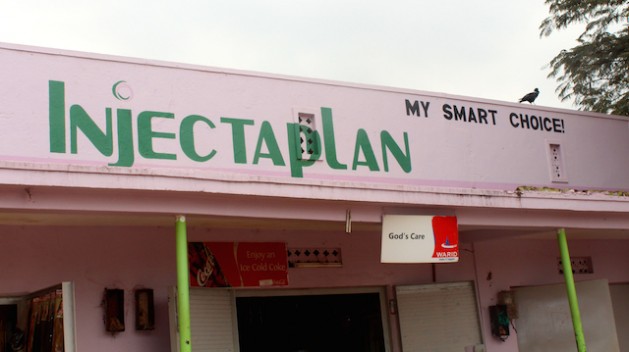UGANDA
Mrs. K’s Heart
Anthony Muiru is a second-year resident in the Massachusetts General Hospital’s Global Primary Care Program. Born in Kenya, Anthony received his M.D. from Harvard Medical School and is interested in strengthening health care delivery systems in rural Africa. Through the GPC Program, Anthony will spend at least four weeks each year at Bugoye Health Center in southwestern Uganda.



At midnight there was a rare calmness in the Cardiac Intensive Care
Unit (CCU) at the Massachusetts General Hospital (MGH). The patients
were tucked in for the night, my co-resident was resting before his next
admission, and the nurses were debating the latest in the news. “What
rotation are you going on to next after the CCU?” one of the nurses
asked, as she handed me a marshmallow and peanut butter sandwich.
“Uganda!”, I replied, remembering that I needed to ensure that things
were in order for my upcoming trip. The flight was confirmed, my
vaccines were up-to-date, Mefloquine for malaria prophylaxis was already
flowing through my veins, and I was ready to return to East Africa.
While working in the CCU, I had access to a plethora of resources that
enabled me to intervene and stabilize critically ill cardiac patients.
Thinking that I had left troubled hearts back at one of the best
hospitals in America, I was shocked when one of my first patients at
Bugoye Health Centre III in rural Uganda presented with what I feared to
be an acute coronary syndrome, which is life threatening as blood flow
to the heart is diminished.
Mrs. K was an overweight woman in her early fifties. She had been
having chest heaviness, difficulty breathing and left shoulder pain for
several days. She did not make anything of these strange symptoms at
first, but became increasingly worried when they persisted. She found it
arduous to carry out simple tasks and she could no longer bear the
pain. She walked up and down the foothills of the Rwenzori Mountains in
order to get to the health center. She could not appreciate the
tranquility of the mountains, the fresh greenery in the background, or
the musical birds of Uganda announcing the arrival of a new day. The
walk to the clinic stressed her heart to its capacity. While the sunrise
near the equator illuminated her pathway, she knew to walk fast before
the scorching sun fully blossomed. Though her chest heaviness limited
her, she nevertheless managed to arrive at the health center hours
before we opened and patiently waited while resting her dying
myocardium.
As I listened to her story and examined her, I became increasingly
worried, but after my recent rotation in the CCU, I was confident in my
clinical knowledge and ability to protect her heart. However, I quickly
realized that I did not have access to any diagnostics or life saving
interventions that I had been trained to use for this condition. Just
several days earlier in the CCU at MGH, I was able to mobilize an
abundant amount of resources. But I had unfortunately arrived to Uganda
in the midst of one of the frequent medication and supplies stock outs.
As an American-trained African doctor with a passion for improving his
fellow Africans’ health, I was appropriately armed with the knowledge of
how to treat and help heal sick people but severely crippled by a lack
of resources. The realization that I was not able to immediately help a
woman with a dying heart was devastating.
As I scrambled to find a way to help Mrs. K, the nurse reminded me of a
Danish-made concoction of aspirin and an opioid. This was the only
medication available at the health center that could relieve Mrs. K’s
pain. I then struggled to explain to her that she had to travel even
further, as quickly as she could, to a higher-level facility. But I
feared that even at the higher-level health center she would not receive
the care she needed. I documented my clinical assessment and
recommendations in her medical notebook. I prayed she would be able to
endure the next trip and that the receiving medical providers would
review my note then act swiftly. I hoped Mrs. K could see the sense of
urgency and worry for her in my face rather than the sense of
overwhelming disappointment that we had let her down. There was no time
to shed any tears as the waiting room was already starting to fill up.
While clinical encounters like this are unfortunately frequent in
Bugoye, there is hope. The inpatient ward at the health center is
typically filled with children suffering from severe malaria. These
children are too poor to afford life saving mosquito nets but fortunate
enough to seek care before their demise. My daily duties included
rounding on the inpatient ward before proceeding to the outpatient
clinic. The highlight of my morning rounds was seeing smiling children
who had presented sick beyond imagination, but quickly recovered with
the appropriate medications. These children reminded me of my own
illness as a child growing up in Kenya, until a dedicated physician took
special interest in me and saved my life.
I am humbled and inspired by the ability to provide life saving
treatment in East Africa. However, the numerous health care challenges
facing clinics such as Bugoye Health Centre III are quite daunting and
my current skill set is inadequate to combat these challenges.
Thankfully, the Global Primary Care Program at MGH has afforded me a
unique opportunity to develop critical skills to better assess and
address barriers to effective health care delivery in a multitude of
settings. I hope to better understand the various determinants of health
and healthcare delivery in disparate settings in order to help
strengthen healthcare systems in Sub-Saharan Africa. Most of all, I want
to help ensure that people like Mrs. K can receive the treatment they
deserve.
 Print
Print



